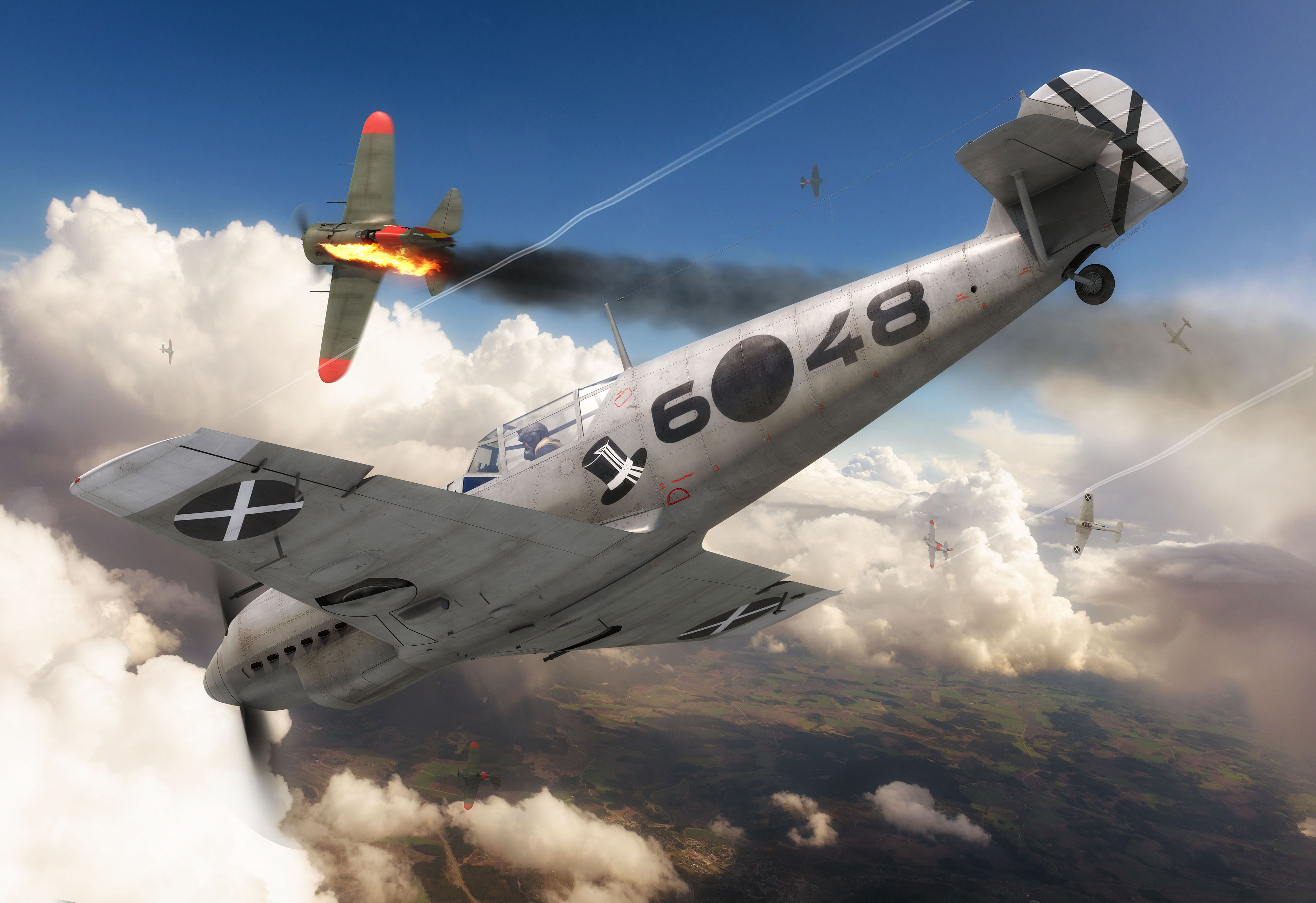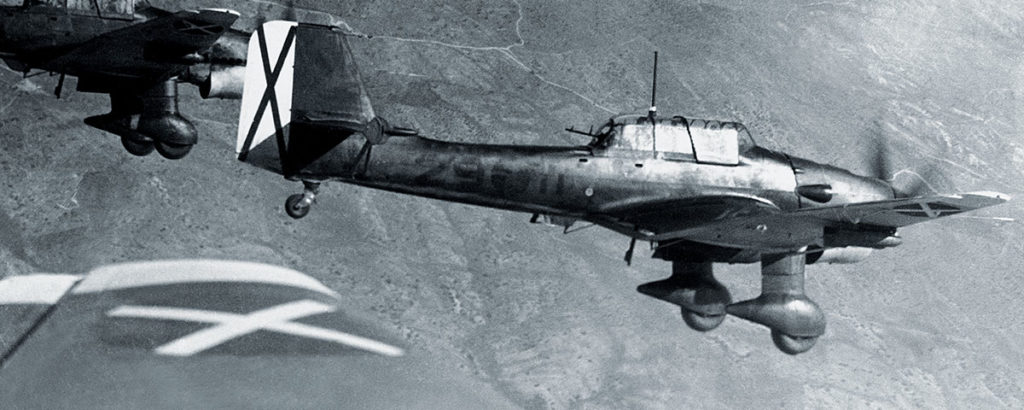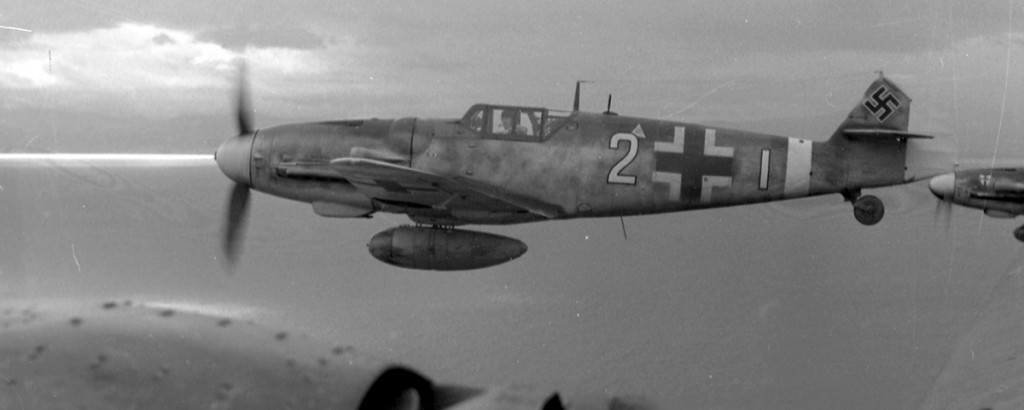Any war is brutal; civil wars are worse. Today, 1939 is most remembered for the start of World War II in September. But that same year involved three other very different clashes. The Spanish Civil War ended in April, while the Nomonhan/Khalkhin Gol conflict between Russia and Japan erupted in May and the Russo-Finish “Winter War” in November. It says something that the Soviet Union was involved in all of them.
Lasting nearly three years from July 1936, the bitter Spanish war has been called the “dress rehearsal for World War II.” It’s a reasoned assessment, considering that Germany and Italy on one hand and the Soviet Union on the other were engaged, committing ground, naval and air forces to support the Nationalist and Republican causes, respectively.
The air war was especially significant beyond the Nationalists’ controversial bombing of Guernica, the subject of the well-known Pablo Picasso painting. More important, the war began with the world’s first military airlift and continued with developments in strategic bombing, refinement of close air support and evolution of fighter tactics.
The Spanish Civil War’s origins were lengthy and complex, falling along cultural-political fault lines. After King Alfonso XIII’s exile in 1931, the Second Republic was formed, soon growing into a far-left coalition government. Inevitably it clashed with traditional conservative factions, especially the Catholic Church. A right-wing coup failed, and the situation tumbled into chaos.
General Francisco Franco Bahamonde commanded a garrison in the Canary Islands at the start of hostilities, but was flown by chartered aircraft to Morocco. There, commanding the Army of Africa, he emerged as the dominant Nationalist leader and embarked on a career that led to 36 years as Spanish dictator.
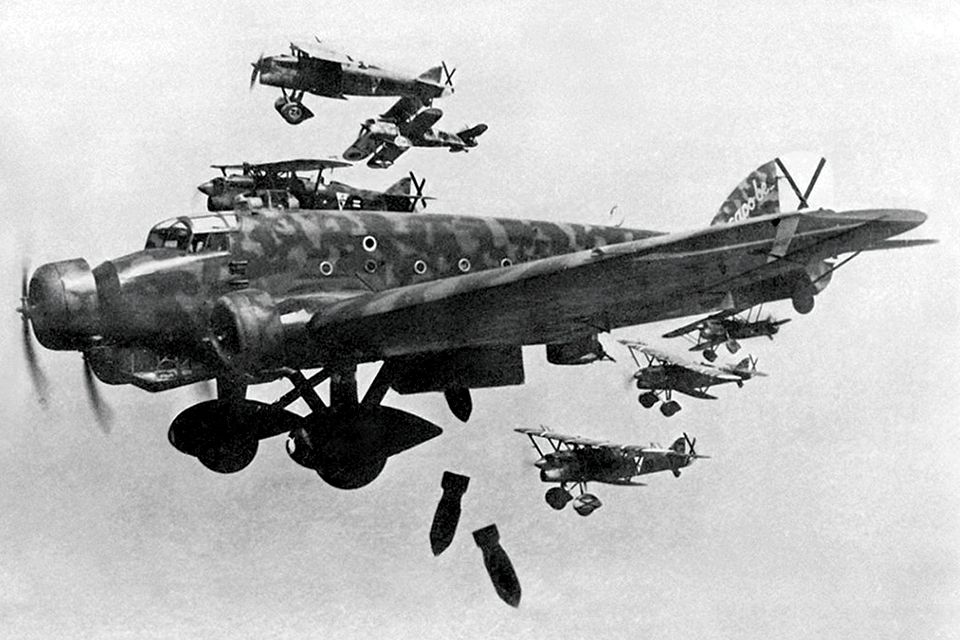
In less than three years the conflict claimed perhaps half a million lives. By far the biggest losers were the Spanish people. The scale of destruction was increased by external influence as Germany, Italy and Russia used the opportunity to test a new generation of weapons and tactics. Almost incidentally, the Fascists and Communists sought to bolster their ideological soulmates on the Iberian peninsula.
Unlike Britain, France, Germany and Italy, Spain lacked an independent air arm. The directorate general of aeronautics was subordinate to the army chief of staff, and Spain’s tiny naval aviation branch was likewise constrained.
At the start of the war the anti-government Nationalists were strongest in the north, the Republicans stronger in the south and east. The Republican government’s Fuerzas Aéreas de la República Española (Spanish Republican Air Force) retained more than two-thirds of some 400 aircraft from the prewar air force. Faced with an international arms embargo, the Nationalists had to look elsewhere for air power.
They found it at the opera.
Despite the world attention later focused on Guernica, the most important aviation event of the war occurred at the start and mostly went unnoticed. Because the majority of the Spanish navy sided with the government, the Nationalists were largely denied seaborne communications and transport. But the Army of Africa’s 30,000 Moroccan and Spanish Legion troops were badly needed in the homeland. Appeals were made in Berlin and Rome, leading to a hastily organized, remarkably efficient airlift. Nazi leader Adolf Hitler reportedly agreed to the request during an interlude at the annual Wagner festival.
Germany provided 20 Junkers Ju-52/3m trimotor transports, twice the number requested, with the first arriving in Spain in late July. They were the bow wave of something without precedent—a strategic airlift.
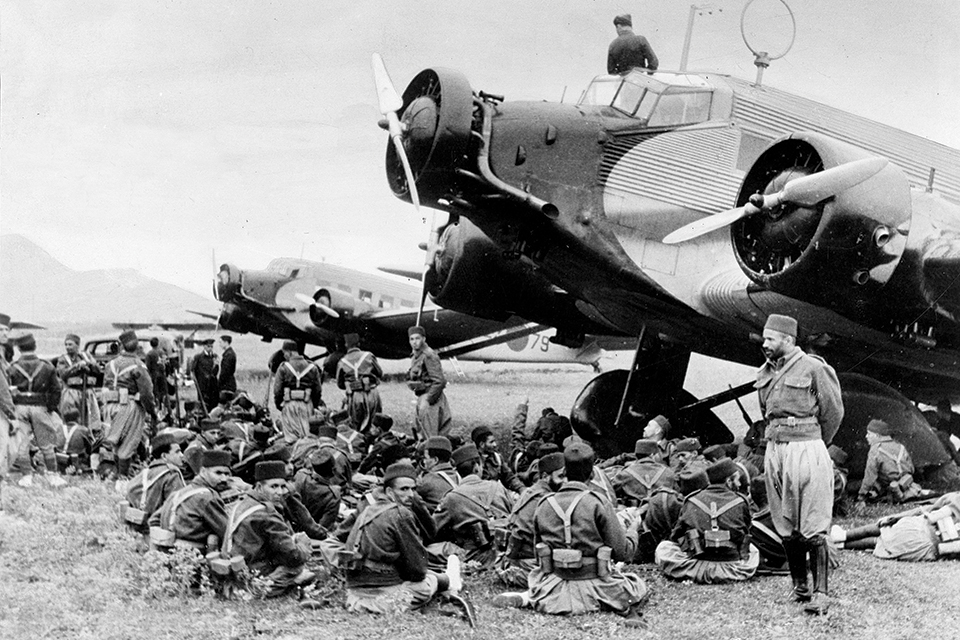
The Ju-52s each carried 25 men on the 130-mile flight from Tétouan at the northern tip of Morocco to Seville, some making four trips a day. Assisted by nine Italian Savoia-Marchetti SM.81s, over the next two months several hundred sorties delivered 14,000 or more troops.
The tactical airlift achieved strategic effects: It ensured that the war would continue beyond 1936. That fall Franco became generalissimo and head of the rebel Nationalist regime.
Both sides scrambled for competent pilots, mechanics and a numbing variety of aircraft. With almost no indigenous aviation industry, Spain had to rely upon imported products.
The number and variety of aircraft used in Spain was enormous: as many as 185 types from Germany, Italy, Russia, France, Britain, the United States and elsewhere. The Republicans and Nationalists each flew more than 60 types, and perhaps 15 more were employed by both sides. More than 40 others were known to be used, but their dispositions remain uncertain. That group probably went more to the government than the rebels—a smorgasbord of “onesies and twosies” of limited or no combat value such as Stinsons, Spartans and various de Havillands.
Ultimately Germany provided more than 700 airplanes. Italy sent 760 but also contributed a significant ground component amounting to a reinforced army corps. Eventually Soviet Russia supplied some 650 planes to the Republican cause.
Experienced pilots were rare. Among the most accomplished Spanish aviators was 32-year-old Joaquín García-Morato y Castaño, a former bomber and floatplane pilot and instrument instructor with extensive aerobatic experience. When the war began he had 1,800 hours total time and over the next three years he added 1,012 more, joining the Nationalists and becoming the leading ace of the conflict. Reflecting the eclectic nature of Spanish aviation, his logbook contained 30 or more aircraft types, but his 40 victories were nearly all scored in Fiat CR.32s. Ironically, he was killed in a Fiat during an aerobatic demonstration in April 1939 shortly after the war ended.
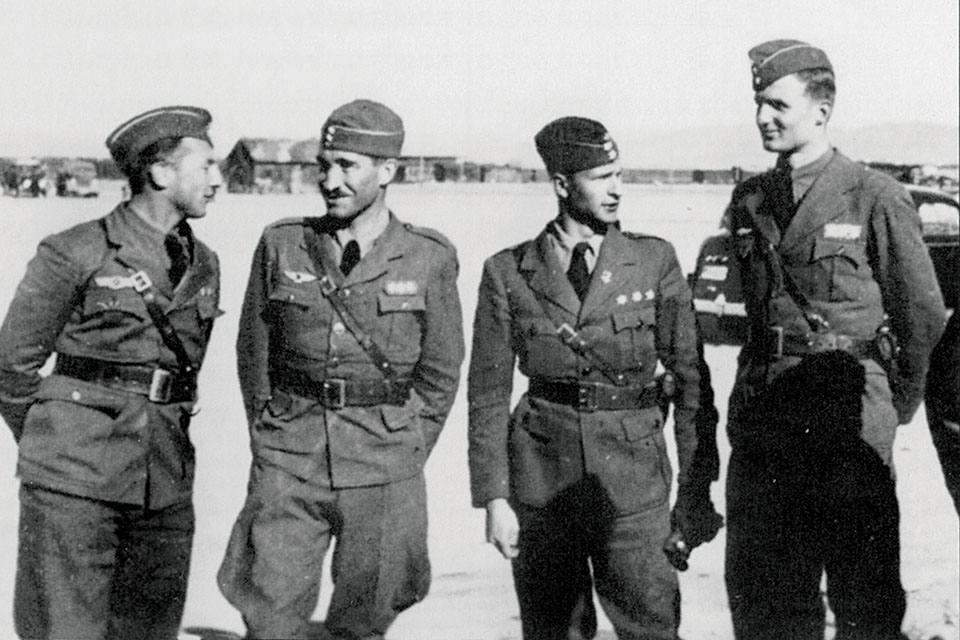
With an urgent need for aircrews, both sides looked abroad. Hundreds of foreign pilots and mechanics hastened to Spain, many anticipating lucrative contracts for their services. Most were disappointed. Not all volunteers were as forthright as Frank G. Tinker, a disgraced U.S. naval aviator who joined the Republicans. “I was not quite sure which side was fighting for what,” he later admitted. “I gathered that each was slaughtering the other for being or doing something that the other side did not like.”
The Nationalists established the Aviación Nacional, originally with fewer than 150 aircraft. The air force chief was General Alfredo Kindelán y Duany, who returned from exile to support Generalissimo Franco but eventually fell out of his favor. The Nationalist air force grew steadily, and by early 1939 Kindelán counted 160 fighters and 140 bombers plus air support and reconnaissance planes.
Nevertheless, the Aviación Nacional depended upon its allies. In July 1938 on the Ebro front, the Nationalists possessed two Savoia-Marchetti SM.79 bomb wings, two Fiat fighter groups and four close-support groups with various Heinkels and Italian IMAM Ro.37s. The Italians initially deployed three CR.32 groups, a bomb wing and an attack group. The Germans contributed a variety of mostly modern bombers, fighters, ground attack and reconnaissance aircraft.
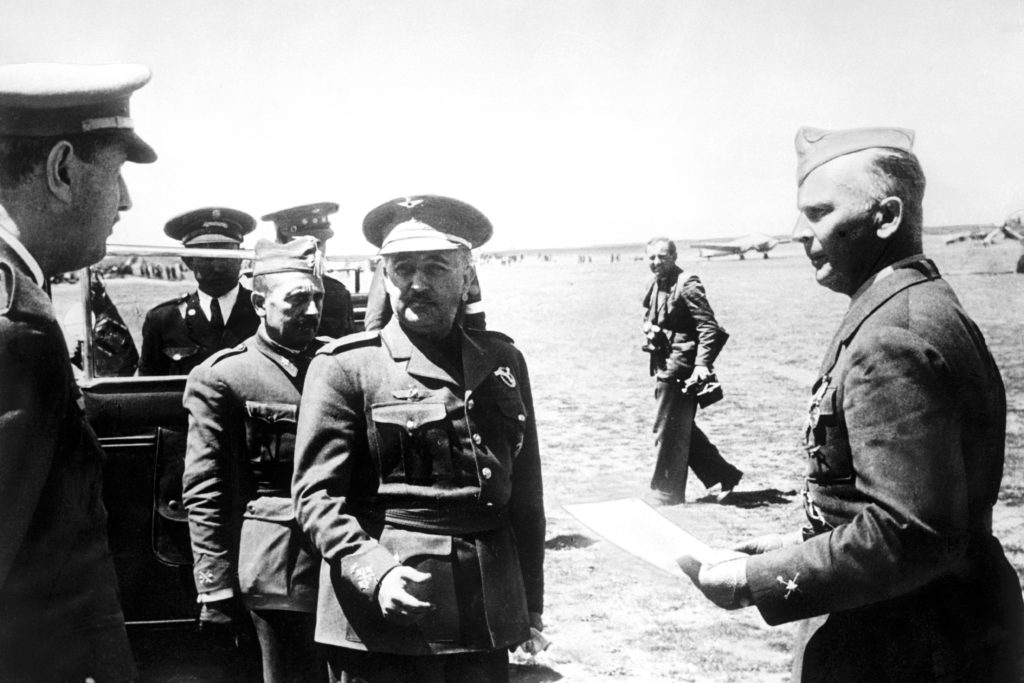
Germany quickly organized and deployed the Condor Legion, which besides its famous aviation branch included training, panzer and anti-aircraft units. Major General Hugo Sperrle took the legion to Spain and its final commander was Lt. Col. Wolfram von Richthofen. Both would become prominent Luftwaffe leaders in WWII.
The Condor Legion’s air component included bomber, fighter and reconnaissance groups, mainly flying, respectively, Ju-52s and Heinkel He-111s; Heinkel He-51s and Messerschmitt Bf-109s; and Heinkel He-45s and Dornier Do-17s. There was also a small naval contingent with Heinkel floatplanes.
From August 1936 through March 1939, the legion lost nearly 300 men, including 120 noncombat deaths. Almost 80 percent of the 178 combat fatalities were aircrew.
The fighters of Jagdgruppe 88 claimed 314 victories, while AA gunners logged 58 more. The legion produced 25 aces, including four in He-51s—most notably Johannes Trautloft, who became a wing commander in WWII. By far the best-known pilot was Werner Mölders, the war’s top German shooter with 14 victories in early-model Bf-109s. Some 130 Messerschmitts went to Spain, but Franco’s most numerous fighters were his 380 Fiats.
The Condor Legion’s He-51 biplanes achieved moderate success, claiming 40-plus victories, but only one Polikarpov I-16 monoplane. Therefore, from the spring of 1937 onward the legion increasingly relied upon the more advanced Bf-109s for aerial combat.
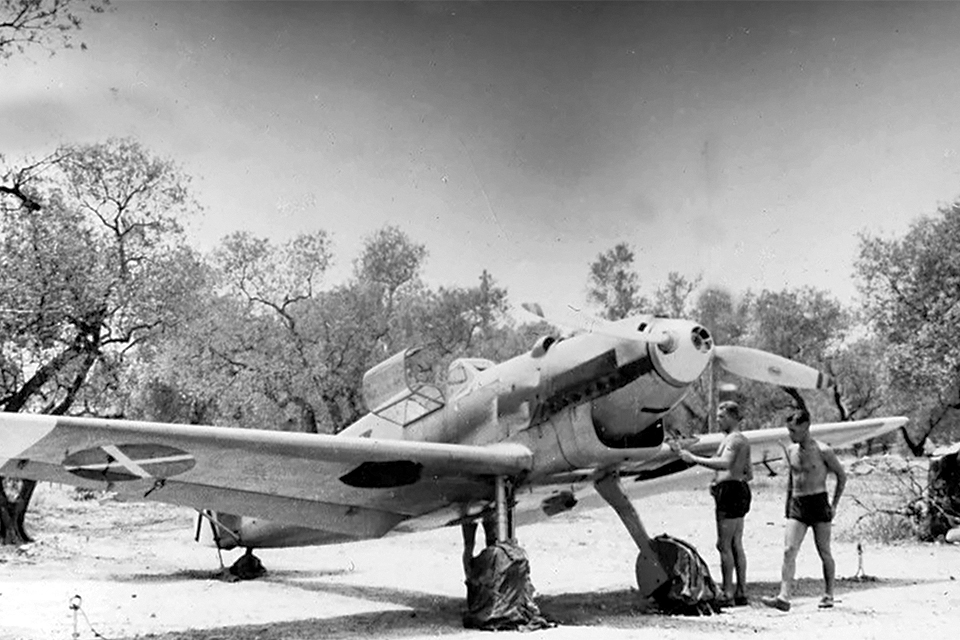
One of the standout Heinkel pilots, future Luftwaffe general Adolf Galland, recalled, “The He 51 was clearly inferior both to the ‘Curtiss’ [actually the Polikarpov I-15] and the Rata [I-16] in speed and armament, as well as in maneuverability and rate of climb. That is why we had to avoid air combat with enemy planes as far as possible and to concentrate instead on ground targets.”
“On hot days we flew in bathing trunks,” continued Galland, “and on returning from a sortie looked more like coal miners, dripping with sweat, smeared with oil and blackened by gunpowder smoke.”
After its role in Franco’s airlift, the Italian Regia Aeronautica established the Aviazione Legionaria (Legionary Air Force), committing some 6,000 men to it during the war. The first of four commanders was Lt. Col. Ruggero Bonomi, who had overseen the Italian part of the airlift. In 1937 Italy’s aviation contingent was subordinated to Maj. Gen. Sperrle of the Condor Legion for improved Nationalist coordination.
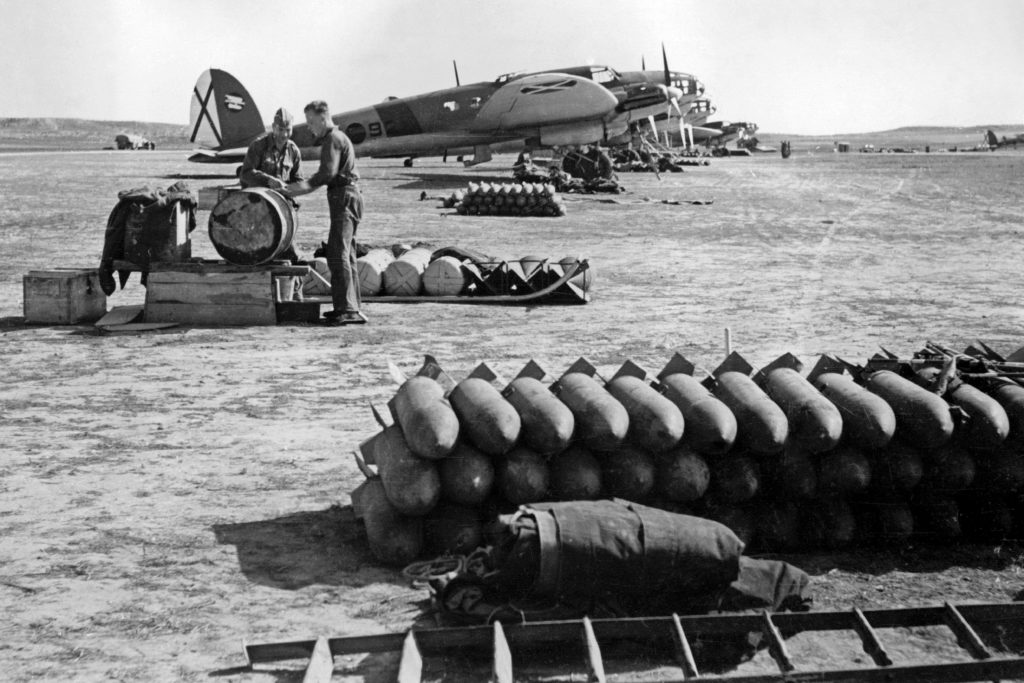
By late 1938 the Italians fielded about 135 aircraft arrayed in two heavy bomber wings with SM.79s and 81s, a Fiat BR.20 medium bomb group, a reinforced attack group mainly equipped with Breda Ba.65s and three CR.32 groups. The Savoias especially targeted major cities such as Barcelona, Valencia and Madrid.
On April 26, 1937, the world learned of Guernica, an obscure city in the Basque country of far northern Spain. The Condor Legion’s chief of staff, Lt. Col. Richthofen, sought to impede a Republican withdrawal through Guernica, hoping that Franco’s forces could overtake them. Presumably with the streets choked by wreckage and the town’s bridge destroyed, the retreating enemy would be trapped.
The initial strike force consisted of 21 German and three Italian bombers, while follow-up attacks were supported by fighters to suppress flak and strafe the rubble. Lacking dive bombers (only seven Junkers Ju-87 Stukas went to Spain), the Germans resorted to carpet bombing. They succeeded in reducing most of the town to ruins but missed the bridge.
Nobody agrees on the death toll among the 5,000 residents, with figures running from 200 to more than 1,600, depending on the source. The Republicans made the most of the incident, spurring international condemnation that culminated in Picasso’s dramatic painting.
Meanwhile, the war and the bombing continued. Nearly a year later, in four days in March 1938, the Italians bombed Barcelona, killing perhaps 1,000 people, reportedly using poison gas. (Italy had used gas against Ethiopians in 1935-36.) However, in fairness to the various air arms, what was frequently derided as terror bombing of cities mainly reflected the scattershot nature of aerial bombardment in the decade before the advent of “precision” bombing.
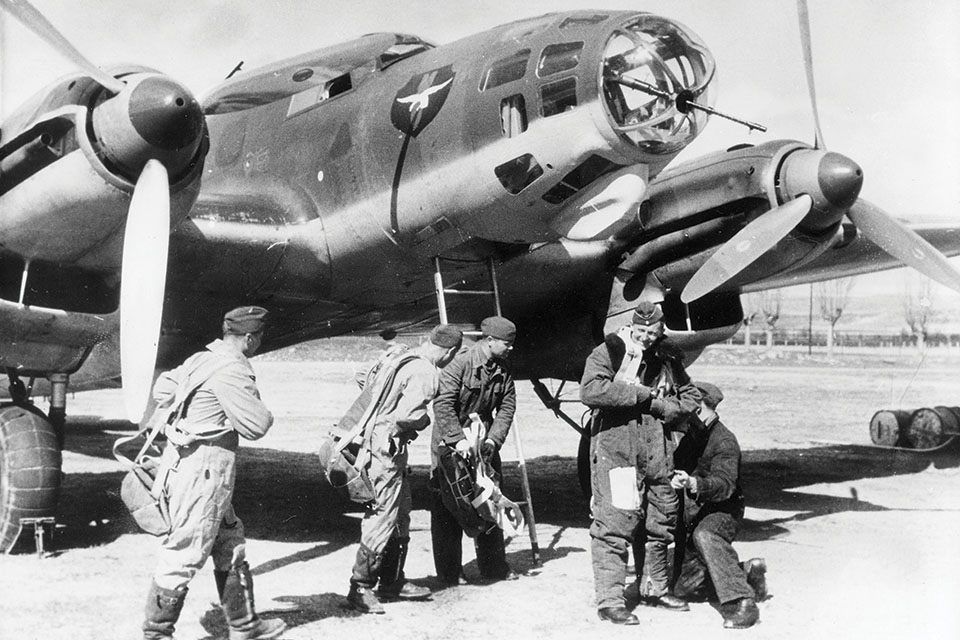
The Nationalists faced a consortium of Communist-Socialist forces generically called Los Rojos—the Reds. The Republican Ejército del Aire (Spanish Air Force) needed personnel immediately, and three levies of 200 student pilots each went to Russia for flight training. Instruction was necessarily brief, however, and the tyros received almost no instrument time. The last batch was still in training when the war ended.
Far more important was Soviet materiel support through most of the war. Moscow delivered more than 400 Polikarpov fighters to Spain, and perhaps 300 more I-15 biplanes were built locally. In addition to aircraft, the Soviets sent about 3,000 men to Spain, ostensibly “volunteers,” plus vehicles, artillery and small arms. The aviation component involved 60 command and staff, 330 fighter pilots, 270 other pilots and aircrew. From October 1936 to January 1939, 158 Russians died in Spain from all causes. They included 59 fighter pilots, 32 other aircrew and 18 killed in accidents.
The Soviets entered combat in November 1936 and their I-16 monoplanes immediately outclassed the opposition. I-16s first clashed with enemy aircraft on November 11, losing two “Rata” pilots against claims of four Heinkels. The I-15’s first victory, a Ju-52, fell on November 4. Supremely maneuverable, the “Chato” did well against other biplanes such as the He-51 and CR.32, but could not begin to compete with the Bf-109, which debuted in 1937.
Dogfighting pilots savored the I-15’s exceptional maneuverability. The I-15bis was rated at 235 mph, slightly faster than the CR.32, and was more agile. Moreover, the I-16 typically had nearly one-third less wing loading than a Bf-109B. Both sides recognized the need for improved armament, with fighter weapons increasing from two rifle-caliber machine guns to four and ultimately to two 20mm cannons in the Messerschmitt.
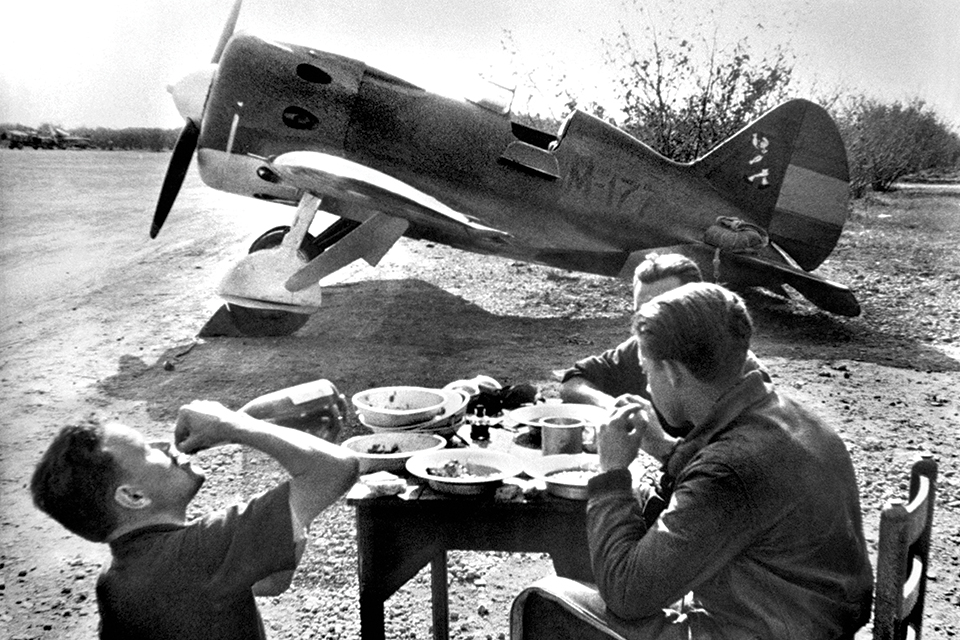
“The I-15 easily outperformed the Fiat CR.32, especially in horizontal maneuvers,” Russian volunteer Evengy Stepanov told Aviation History in 1995. “I often came up against the Bf-109 in combat….It performed well but was inferior to the I-16 in vertical maneuverability.”
Stepanov claimed 10 aerial victories, including a rare nocturnal taran ramming attack. “On the night of November 27-28, 1937, I shot down two SM.81 bombers in the vicinity of Barcelona,” he said. “During this attack, I had to ram one of the bombers with the left leg of my undercarriage. There was no special technique for ramming, nor could there be since that was a last-ditch method in combat.”
Close air support and ground attack received little popular attention, but both missions were proven in Spain. A prime example occurred when the Nationalist advance stalled near Guadalajara in March 1937. As the weather cleared, Republican aircraft swarmed over the Italian positions, bombing and strafing the Littorio Division nearly to destruction. It was probably the first time that aviation alone had blunted a major ground operation, and it showed the way ahead. The Soviets’ “conveyor belt” technique maintained near-constant pressure on the target area.
Recommended for you
Air action against enemy shipping likewise received little coverage. In May 1937 three fast new Tupelov SB-2s from Los Alcázares launched against a reported Nationalist naval squadron near the Balearic Islands. The primary target was the 10,600-ton cruiser Canarias, but the Soviets misidentified and attacked the 12,000-ton German heavy cruiser Deutschland. The Germans sustained more than 100 casualties, including 31 killed.
By mid-1938 the Soviets had learned as much about their weapons and tactics as they needed. Therefore, dictator Joseph Stalin began withdrawing his aviation component that summer, absorbing the lessons for future use. In any case, late that year the Republican cause looked grim with Nationalist gains in the east.
Still, foreign volunteers came forward. French author André Malraux supported a squadron of Republican Potez 54s from bases near Barcelona and Madrid—France’s major contribution to the government war effort.
The widely publicized “Yankee Squadron” included some colorful American airmen, none more so than hard-drinking Bert Acosta, who in 1927 had set an endurance record and flown the Atlantic with Richard Byrd. The outfit was led by one of the least-known aces in American history. Frederic I. Lord was a 12-victory Sopwith Dolphin ace in WWI and then in the Russian Civil War, against his future comrades. With a taste for adventure, Lord became an airman of fortune. He briefly flew in the Mexican Revolution, then was recruited by the Republicans in Spain. Flying outmoded equipment (one wing fell off in his first flight), he and his fellow mercenaries were often threatened with execution by their employers. In a matter of weeks most of the not-so-merry band returned home, sulking over fees never paid.
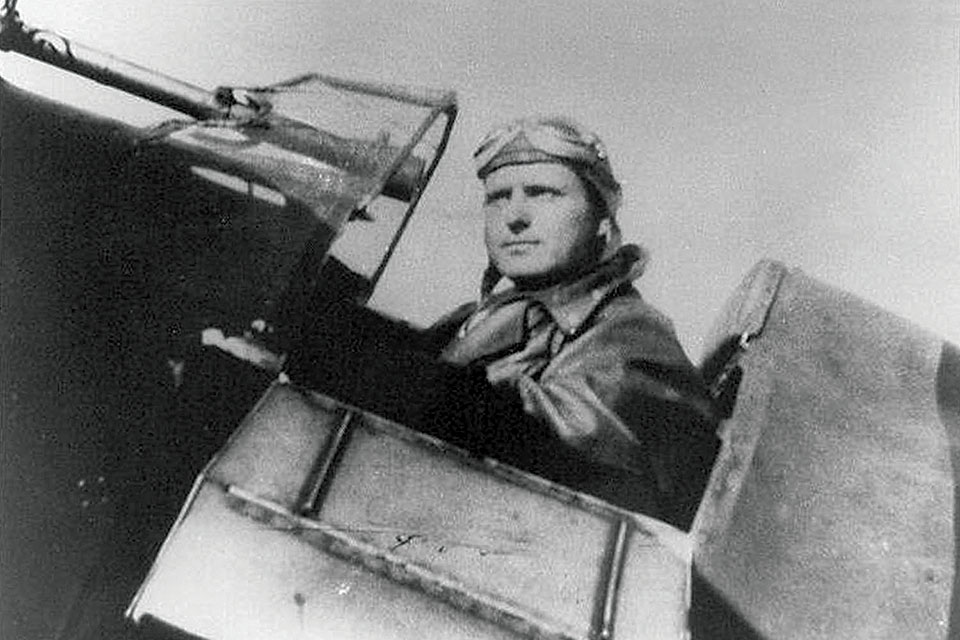
Other Americans gained fame, or at least notoriety, as government fighter pilots. The top scorer was Frank Tinker, with eight confirmed victories. Orrin Bell, Stephen Daduk and Harold “Whitey” Dahl all claimed five or more victories, though they were unconfirmed. Albert J. “Ajax” Baumler (4½ victories) narrowly missed ace status in Spain but added 4½ to his tally with the U.S. Fourteenth Air Force in China.
Conventional wisdom holds that experience gained in Spain influenced air doctrine and operations in WWII. As a broad statement that is accurate, but far more applicable tactically than strategically. The ground support spadework in Iberian soil benefited the Germans and the Russians, and certainly the Condor Legion’s development of the “finger-four” formation of two pairs of fighters was a revelation. Most historians credit Werner Mölders with that innovation, but contemporary accounts also cite contributions of others, notably Günther Lützow and Harro Harder.
However, Adolf Galland noted, “Whatever may have been the importance of the tests of German arms in the Spanish Civil War from tactical, technical and operational points of view, they did not provide the experience that was needed nor lead to the formulation of sound strategic concepts.” Chief among the foregoing was strategic bombing. Neither side possessed the strength to destroy enemy industrial targets—an organizational flaw that went unrecognized in the Luftwaffe.
Another lesson often lost in Spanish skies was the need for strong fighter escort for bombers. Some contemporary bombers outpaced fighters, obscuring the coming requirement for “pursuits” with the range and speed to keep up with them. European fighters would continue to suffer from lack of endurance, a factor that worked to the Royal Air Force’s advantage in 1940 when German fighters were perennially on the verge of fuel exhaustion over England.
Though too astute to officially join the Axis, Franco felt a debt to Hitler. Therefore he sent limited resources to support Germany against Russia. An infantry division and five squadron-size rotations of fighter pilots served alongside Wehrmacht units on the Eastern Front from 1941 to 1943. And after the war, Franco allowed many former Nazis to find refuge in Spain.
Frequent contributor Barrett Tillman’s latest project is a book tentatively titled August 1945: The Month That Shaped the World, due from Osprey next year. Additional reading: Aircraft of the Spanish Civil War 1936-1939, by Gerald Howson; The Legion Condor, by Karl Ries and Hans Ring; Fiat CR.32 Aces of the Spanish Civil War, by Alfredo Longoluso; and Spanish Republican Aces, by Rafael A. Permuy López.
This feature originally appeared in the September 2021 issue of Aviation History. Don’t miss an issue, subscribe!

